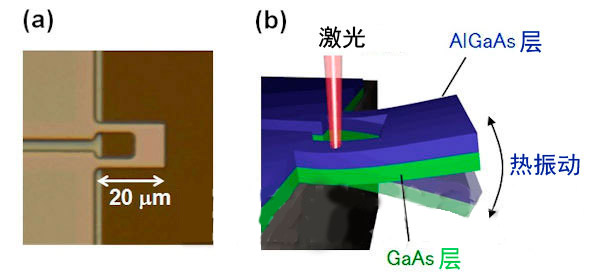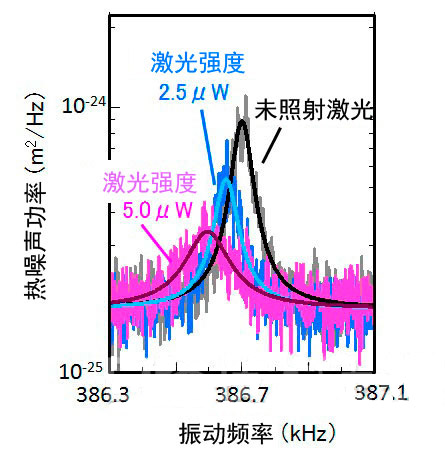Nippon Telegraph and Telephone (NTT) and Tohoku University in Japan jointly implemented a "laser cooling method" that reduces the thermal noise of MEMS mechanical oscillators by irradiating laser light. MEMS oscillators are mainly used for sensors and signal transmitters, and this technology is expected to improve its accuracy. "Laser cooling" is a method in which an object releases energy by irradiating a laser to cool it. This time, the researchers used crystal growth technology to realize a 200-nm-thick two-layer semiconductor structure consisting of gallium arsenide (GaAs) and aluminum gallium arsenide (AlGaAs) with excellent optical and piezoelectric properties, which were machined using microfabrication technology. Oscillator. With sensitive light absorption characteristics, only light of a specific wavelength is absorbed, and the internal voltage generated at this time is used as a braking force against thermal vibration, thereby reducing thermal noise. The mechanical oscillator produced this time was a plate spring having a length of 20 μm, a width of 14 μm, and a thickness of 0.4 μm. By simply irradiating the root of the oscillator with laser light, the thermal vibration can be halved. Previously, laser cooling required the use of sophisticated optical resonators. This method does not require an optical resonator and can be used as a semiconductor integrated device. In the future, NTT and Tohoku University will further promote research to improve the cooling effect, integration with laser components, and work at room temperature.
Pneumatic valve is a kind of valve controlled by air pressure, which is widely used in industrial automation control system. Its main applications include the following aspects:
1. Fluid control: pneumatic valve can be used to control the flow and direction of liquid or gas, such as controlling the flow in the pipeline, exhaust gas emission, etc.
2. Pressure control: pneumatic valve can be used to control the pressure of fluid, such as controlling the pressure of compressed air, regulating the pressure in the hydraulic system, etc.
3. Temperature control: pneumatic valve can be used to control the temperature of fluid, such as the temperature of heating or cooling system.
4. Automatic control: pneumatic valve can be linked with sensors, PLC and other equipment to realize automatic control, such as automatic production lines, robots, etc.
5. Safety control: pneumatic valve can be used for safety control, such as controlling emergency stop, preventing overload, etc.
In general, pneumatic valve plays an important role in industrial automation control system, which can improve production efficiency, reduce costs, and ensure safety.
Pneumatic Valve,Pneumatic Valve Types,Pneumatic Control Valve,Pneumatic Actuator Valve WUXI KVC-VALVE , https://www.wxkaiweixi.com
(a) Microscope photographs (top view) and (b) experimental pattern diagrams (side view) of the fabricated mechanical oscillator. 
Thermal noise spectrum. Thermal noise can be halved.